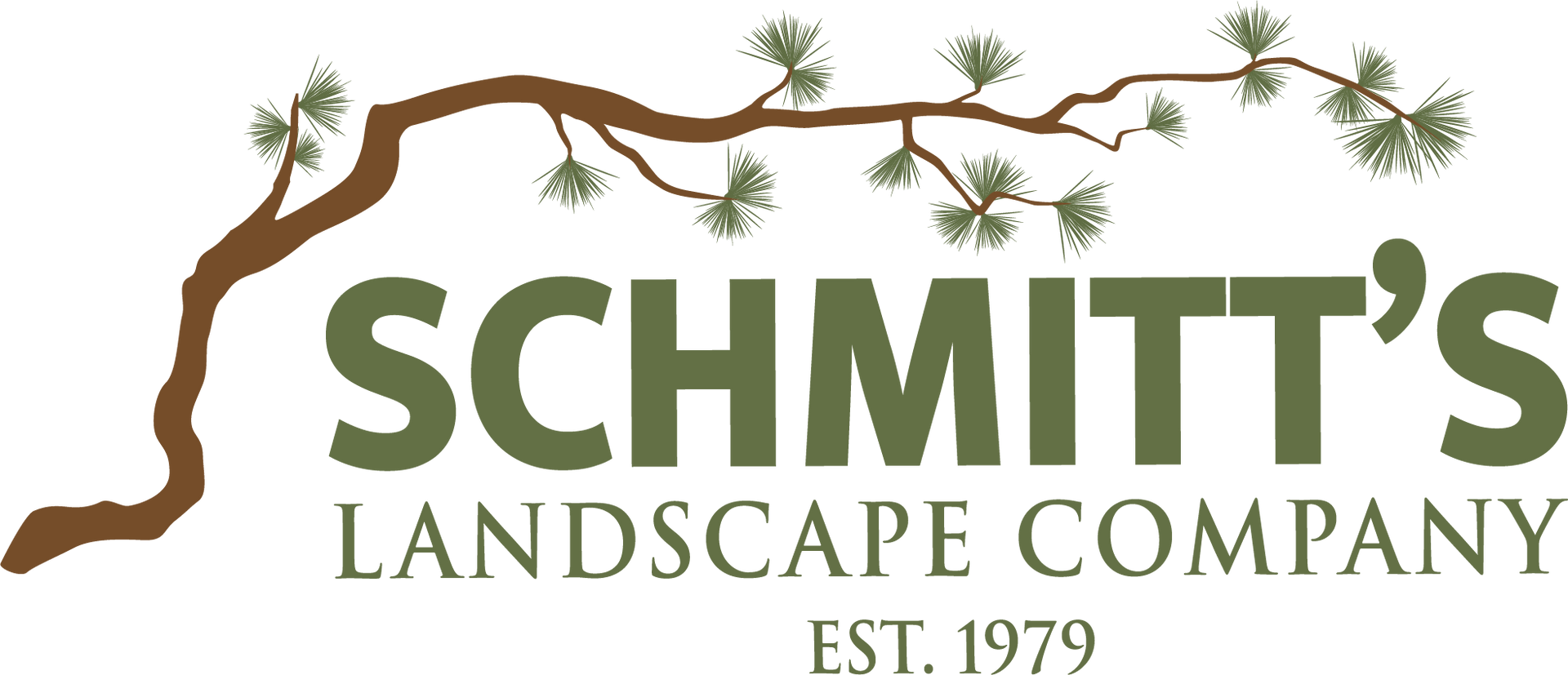FAQs
Schmitt's Landscape Company
Have a landscape-related question? We have the answer. Check out these FAQs and give us a call today for more information!
-
When is the best time to plant trees, shrubs and flowers?
Spring and Fall are great times with the cooler temperatures. It is still possible throughout the summer months but requires more attention.
-
How do you build a patio?
Excavate 9” of soil. Install 6” of compacted gravel base, 1” setting bed of sand and then install pavers. Once complete, install paver edging and polymeric joint sand between the paver joints.
-
How often should I put mulch down?
If doing every season, it may only be necessary to put a light 1” top dressing of mulch down. If doing every other season or few years, it would be beneficial to install 2-3” of mulch.
-
What is landscape design?
Landscape design is the art and practice of planning and creating outdoor spaces, such as gardens, parks, and public spaces. It involves considering factors like function, aesthetics, ecology, and sustainability.
-
What is a landscape?
A landscape is the visible features of an area of land, including its landforms, natural elements like vegetation and water bodies, and human-made elements like buildings and structures. It's often considered in terms of its aesthetic appeal, but can also be studied for its ecological, geographical, and cultural significance.
-
What is hardscape?
• Hardscape refers to the non-living, structural elements within a landscape design. It's often contrasted with softscape, which encompasses the living, plant-based elements.
• Hardscape elements serve various functional and aesthetic purposes, providing structure, defining spaces, creating pathways, and adding visual interest to outdoor areas.
-
What are common hardscape materials?
• Pavers: Brick, concrete, stone, porcelain, and gravel are popular choices for patios, walkways, driveways, and pool decks.
• Stone: Natural stone like flagstone, slate, bluestone, and boulders are used for walls, patios, fireplaces, and accents.
• Wood: Timbers, sleepers, and decking are used for fences, pergolas, arbors, raised beds, and walkways.
• Concrete: Versatile material for patios, walkways, driveways, steps, walls, and benches.
• Metal: Aluminum, steel, and wrought iron are used for fences, gates, railings, and garden structures.
-
What are some common hardscape features?
• Patios: Outdoor living spaces for dining, relaxing, and entertaining.
• Walkways and paths: Create routes through the landscape, connecting different areas.
• Driveways: Provide access to homes and garages.
• Walls and fences: Define boundaries, create privacy, and add visual interest.
• Retaining walls: Hold back soil on slopes or create terraced areas.
• Stairs and steps: Facilitate movement between different levels in the landscape.
• Water features: Ponds, fountains, waterfalls, and pools add tranquility and visual appeal.
• Fire pits and fireplaces: Create gathering spaces for warmth and ambiance.
• Outdoor kitchens: Expand cooking and dining possibilities outdoors.
• Lighting: Enhances safety, visibility, and ambiance in the evening.
-
What are the benefits of hardscaping?
• Increases functionality and usability of outdoor spaces.
• Creates a more defined and organized landscape.
• Improves curb appeal and property value.
• Can be used to create different zones or areas within a landscape.
• Provides long-term durability and low maintenance.
• Can be used to create unique and visually appealing designs.
-
What should I consider when planning hardscape?
• Budget: Determine the amount you're comfortable spending.
• Functionality: Identify the primary uses of your outdoor space.
• Aesthetics: Choose materials and designs that complement your home and landscape style.
• Maintenance: Consider the upkeep requirements of different materials.
• Permits: Check local regulations for any necessary permits.
• Professional help: Consult a landscape designer or contractor for guidance and expertise.

Share On: